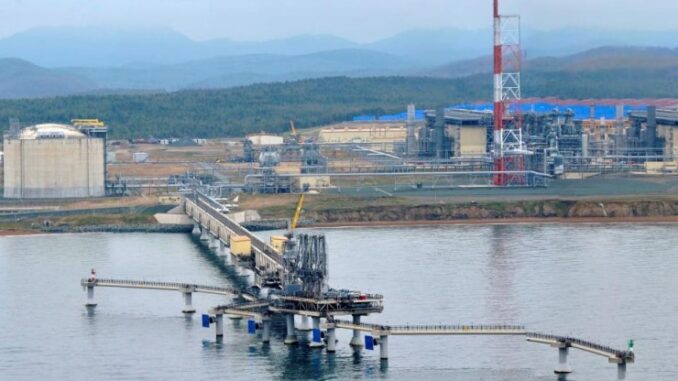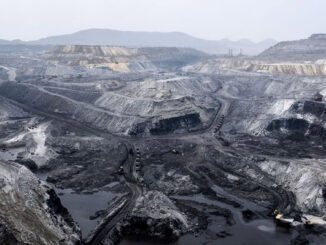
In an escalation of its defense strategy, Ukraine has intensified drone strikes on Russia’s energy infrastructure, targeting oil refineries, pipelines, and storage facilities that fund Moscow’s war machine. These attacks, which have disrupted Russian oil production and exports, come amid rising global oil prices as markets react to potential supply shortages. Brent crude futures climbed modestly on August 25, 2025, amid fears of further disruptions to Russian output.
This surge reflects broader geopolitical tensions, with Ukrainian President Volodymyr Zelensky issuing stern warnings to countries reliant on Russian energy, signaling a potential cutoff in supplies to nations seen as complicit in Moscow’s aggression.
Are you Paying High Taxes in New Jersey, New York, or California?
Ukraine’s Campaign Against Russian Energy Assets
Since the start of 2024, Ukraine has launched at least 81 drone strikes on Russian oil facilities, focusing on infrastructure critical to military operations and revenue generation.
These operations mark a shift from earlier restraint, reportedly at the urging of the United States, which had discouraged attacks on crude export facilities to avoid broader market instability. However, recent strikes have targeted key export routes, including the Druzhba pipeline, which supplies oil to Hungary and Slovakia.
Notable incidents include:
Novoshakhtinsk Oil Refinery (Rostov Region): A drone attack caused extensive fires, with satellite imagery revealing that most storage tanks were destroyed. The facility, a major hub for fuel production, remains smoldering days after the strike.
Lukoil Facility Near Sochi: On July 23, 2025, explosions disrupted operations, grounding flights and igniting fuel depots. This attack targeted supplies linked to Russia’s military logistics.
Druzhba Pipeline Attacks: In recent weeks, Ukraine struck pumping stations along this vital artery three times, halting flows to Hungary and Slovakia for at least five days in the latest incident.
Russian officials reported damage to transformer stations, with repairs ongoing but timelines uncertain.
Volgograd Refinery (Lukoil): On August 15, 2025, a strike ignited fires that were eventually extinguished, but it contributed to a broader pattern of disruptions.
These strikes have collectively knocked out approximately 13% of Russia’s oil refining capacity since early August, leading to record-high gasoline prices within Russia and straining domestic fuel supplies.
Independent assessments estimate damages at over 60 billion rubles ($714 million), with impacts extending to military fuel trains and pumping stations.
Ukraine’s strategy aims to deprive Russia of war-funding revenues, which total billions annually from energy exports.
Damage Assessment and Repair Timelines
The physical toll of these attacks varies by target, but common damages include fires in storage tanks, explosions at processing units, and disruptions to electrical and pumping systems. For refineries like Novoshakhtinsk, the destruction of multiple tanks suggests extensive structural damage, potentially requiring months for full reconstruction due to the need for specialized equipment and materials amid Western sanctions.
Pipeline incidents, such as those on Druzhba, have shorter immediate repair windows—flows were restored after a few days in prior attacks—but repeated strikes risk cumulative wear, increasing vulnerability to future disruptions.
Russian experts have managed to extinguish fires quickly in some cases, but overall refining output has dropped, forcing Moscow to impose export bans on gasoline to stabilize domestic markets.
Repair efforts are hampered by shortages of Western technology, with timelines ranging from days for minor fixes to several weeks or longer for major overhauls.
Zelensky’s Threats and Diplomatic FalloutPresident Zelensky has not shied away from leveraging these attacks to pressure Russia’s allies. On Ukraine’s Independence Day (August 24, 2025), Zelensky publicly threatened Hungary, accusing it of undermining European energy security by relying on Russian oil via Druzhba.
Hungarian Foreign Minister Péter Szijjártó responded sharply, rejecting the “intimidation” and emphasizing that attacks on the pipeline constitute an assault on Hungary’s sovereignty.
Slovakia echoed these demands, urging the European Commission to intervene.
Zelensky’s rhetoric extends beyond Hungary, implying that continued reliance on Russian energy could lead to broader disruptions. In earlier statements, he has called for global sanctions on buyers of Russian oil, warning that nations like India and China risk enabling Moscow’s aggression.
This stance aligns with Ukraine’s view that cutting off Russian exports is essential to weakening the Kremlin’s war effort, even if it means temporary hardships for dependent countries.
Such threats have strained relations with EU members still importing Russian fuel, highlighting divisions within the bloc.
Impact on Global Oil Markets
The attacks have injected volatility into oil markets, with prices rising as traders weigh the risks of sustained Russian supply cuts.
On August 25, Brent crude increased by about 0.1% to hover near $80 per barrel, driven by concerns over potential U.S. sanctions on Russia and escalating Ukrainian strikes.
Analysts note that while OPEC+ could offset short-term losses, prolonged disruptions—combined with fading hopes for a quick ceasefire—could push prices higher.
Russia’s energy sector, a cornerstone of its economy, generates critical funds for the invasion. Ukraine’s actions have already caused daily losses estimated at $15 million per major strike, pressuring Moscow’s finances.
However, the strategy risks backlash, as seen in Hungary’s complaints, and could complicate peace talks amid U.S. political shifts.
Looking Ahead
Ukraine’s aggressive targeting of Russian oil represents a strategic pivot, breaking from previous norms to directly challenge Moscow’s economic lifeline. While effective in causing tangible damage and boosting oil prices, it heightens risks of retaliation—Russia launched massive strikes on Ukrainian energy sites in response. One also has to ask, are LNG and natural gas pipelines next as well?
Zelensky’s threats underscore Kyiv’s determination to isolate Russia, but they also test alliances. As winter approaches and energy demands rise, the global market will watch closely for further escalations that could reshape the energy landscape.
One must also question why Zelensky has canceled elections in the past and refuses to allow the Ukrainian people to decide whether he should remain their president or their dictator. President Putin is asking for fair elections, and wants to know if Zelensky has the authority to sign the peace treaty.
Avoid Paying Taxes in 2025
Crude Oil, LNG, Jet Fuel price quote
ENB Top News
ENB
Energy Dashboard
ENB Podcast
ENB Substack






